|
What about enlightenment? Is that the destination of our spiritual awakening? Is it for anyone and what does that mean? All people are equal and deserve equal rights and opportunities. Awakening is available to all regardless of nationality, gender or social status. Yoga master Swami Sivananda confirmed this to be true and encouraged all to step on the path to Awakening now. Being in the Divine presence, peaceful and truthful with a steady mind and an open heart describes that path for me. Having a practice that sustains and cultivates our ability to be present and aware is this path. What do the Yoga texts say about enlightenment? In Yoga Sutras of Patanjali our world is divided into 2 separate entities: that of material and that of Spirit. One’s final realization comes from knowing the Spirit. It comes only when one no longer has any seeds of past desires that bring forth more karma and births. Once these seeds are “burned” by practice, one becomes free of future karma, consequences of actions in the material world and is liberated from the painful cycle of births and death. The Bhagavad Gita says something a little different. Krishna describes how an enlightened, a realized person lives and acts. Gita speaks of a person of steady wisdom who is not affected by the sensual temptations, who keeps equilibrium amongst the sense objects and pairs of opposites such as praise or blame, heat or cold etc. This scripture speaks of unity. The material world being part of Divine Oneness. Non-dual reality is the basic principle of Vedanta. Enlightenment does not necessarily suggest freedom from moral and ethical obligation of the material world but rather conscious blending of matter and spirit and rejoicing in the well being of all. It draws a clear picture of a Saint. In eastern philosophy reincarnation is common and widely believed. One’s rebirth is based on karmic seeds, unfulfilled desires and clinging. Sri Ramakrishna said that upon final realization the soul is no longer tied to this world and often moves on. He said that about his beloved disciple Swami Vivekananda who died young and it’s believed he died at the moment of such realization. Sri Ramana Maharshi said that ultimately liberation comes as a gift from the Divine regardless of our karmic predispositions, aspirations or practices, the same as Mundaka Upanishad says. This text also describes liberated sage. Many of the world’s religions believe that saints continue to act in the world and set an example for others on the path of evolution of the individual soul. They serve God's mission which is just. Buddhism speaks of Bodhisattva, a person who is able to reach nirvana but delays doing so out of compassion in order to save suffering beings. Bodhisattva is a realized soul who chooses to be born again and again to help others. The Dalai Lama states that the path to awakening consists of developing simultaneously wisdom and compassion. The path to enlightenment of Christian saints has always been an interest of mine. The final stages describe the blending of the individual with Divine, where the individual will dissolves into the will of God like a drop blending in with the ocean. It is also not uncommon that the awakening of these individuals is unrecognized by others. My favorite saint is St. Theresa of Avila who describes her path to enlightenment in her autobiography she wrote in 1575. The path of unfolding blessings from God and overcoming obstacles of vanity and personal desires. My path started in Christianity and eventually I committed to Yoga. I found Integral Yoga in 1998 and what I learned and experienced has greatly shaped my life. I have recently had to reconsider my faith and dedication to the yogic path. The fact that my “realized” teacher broke basic ethical principles of monastic celibacy and truthfulness made me pause and reconsider. Is enlightenment what I thought it was or was he not quite there yet or fell down from the heights of the liberated state? The belief that Swami Satchidananda, the founder of Integral Yoga was a fully realized human being is challenged. Swami Vimalananda, monastic of Integral Yoga taught us that the “fake it until you make it” approach is ok, that we as yoga teachers should own the teachings when presenting them and do our best to follow them. Was that what our founding Swami’s approach was as well? The conviction that Swami Satchidananda achieved liberation as described in Yoga Sutras of Patanjali, a state which was beyond the ethical ties of the material world is a philosophical point that many believe. These ethical guidelines were broken resulting in harm. Some cannot acknowledge a possibility that his “secret” is real since the faith in his Divinity and their idea of Divinity differs. Swami Divyananda told us “You cannot judge the actions of Enlightened ones!”. Before all this, I felt a great encouragement from Swami Satchidananda’s existence. If he “made it”, I could also make it or at least get near. I had a goal and a way to proceed. I had an idea about enlightenment and he was my example. That changed for me since I discovered the well kept secret about him. I had to sort my thoughts, feelings and beliefs. I continue to feel a lot of gratitude for his sharing of these ancient teachings with us and gratitude for many of his direct disciples making them accessible. Regardless of his past, what I learned from him has had a tremendous positive effect on me and my students. These ancient teachings of Yoga are valid and reliable regardless of his enlightenment status. How to keep moving forward on the Yogic path? I had to adjust and adapt. I felt a deep sense of betrayal. For a while it felt like I was free falling. I had to learn to embrace the unknown, not grasping at anything as the ultimate truth. I had to let the house of cards collapse and revisit my beliefs and faith. We all have to do this alone while being together. No one can do the inner work for us and mutual support is invaluable. “Just studying religion ourselves is not enough; we need to connect with humanity, with the world in beneficial ways. If we can form positive, conscious relationships with the human family, then we can really make a difference in the world.” ~Lama Surya Das There is a unity amongst us all on this planet and our interconnection is clear to me. Everyday, I experience being very much blended with this world and paradoxically I also stand apart. There is such complexity to our existence. I know I am much more than a disciple of one Yoga master. I continue to feel guided by Divine and by Swami Sivananda, Swami Satchidananda’s Guru. I feel open to receiving this guidance. Will I be able to receive teachings as given by Swami Satchidananda without questioning now? Only time will show. I now look for clues from historical and cultural settings of spiritual teachings in an attempt to find the core of Truth in them. I ask what the scripture said and what other masters say. “When the student is ready, the teacher will appear” is a well known saying originating all the way back to Buddha and Lao Tzu. I believe that Swami Satchidananda was such a teacher for many of us. I believe guidance also comes internally beyond the personality of one man or lineage. The inner Light is showing me the way. I am so glad I am still open to guidance. I don't want "trust no one" as my motto and yet a healthy dose of skepticism is smart. I aim to learn healthy boundaries and live in Truth. I invite joy, awe and peace into my life. “May you realise that the shape of your Soul is unique, that you have a special destiny here, that behind the complete facade of your life, something beautiful, planned, and eternal is unfolding and happening.” — John O'Donohue I continue to teach and practice Yoga as a wondrous path to Peace and to Divine. I am dedicated to sharing the ancient teachings of Yoga and continue to practice them. I want to live peacefully and truthfully. Divine supports me. “The Way It Is” by William Stafford There’s a thread you follow. It goes among things that change. But it doesn’t change. People wonder about what you are pursuing. You have to explain about the thread. But it is hard for others to see. While you hold it you can’t get lost. Tragedies happen; people get hurt or die; and you suffer and get old. Nothing you do can stop time’s unfolding. You don’t ever let go of the thread. ________________________________________________________________________________________
Sources:
4 Comments
 “A person can rise up through the efforts of his own mind; or in the same manner, draw himself down, for each person is his own friend or enemy.” - Bhagavad Gita, 6.5 chapter The Yoga of Meditation Yoga offers a method for purification of the body, the energetic field and the mind. Most are familiar with the physical asana practice which conditions the body to make it a better functioning vehicle in our lives. Asanas help develop strength and flexibility. They improve circulation, function of the internal organs and balance the nervous system. Purification of the body and toxin elimination is part of the process. We let go. Pranayama, breathing practices help to purify the energetic field. This is a more subtle region which is perceived with clarity by only a few. The process usually brings a little level of disturbance that is hard to pinpoint. When continued, pranayama starts to “clear the waters” and we begin to feel lighter and yet grounded. We start to think with clarity. Mental purification comes indirectly from the practice of these two mentioned methods of yoga. The most direct path is through meditation. Some would say the mind is also purified through other paths like selfless service, prayer or spiritual study and inquiry. What happens when meditating? We cultivate attentiveness in two forms, concentration and open-awareness state. Practice of concentration creates a one-pointed mind which allows us to stay present with what we choose rather than a mind which is being constantly distracted and tossed around like a leaf in the wind. On the other hand, the developed broad sense of awareness allows many aspects of our being to coexist; the perception of the body’s sensations, the input from the senses and the mental world of thoughts and emotions. The practice of meditation gives us the ability to move with life while being aware of what is happening within us and around us with clarity. It gives us an opportunity to stay focused on what is important to us, what gives our life meaning. What is this mental purification process in meditation? As we meditate, we direct our attention to a chosen point generating positive and steady vibrational states. The ancient yogic text, The Yoga Sutras of Patanjali, recommends focusing on something that is uplifting. As we focus, the mind comes in with stories and narratives. Such thoughts distract us. As soon as we realize it, we recover our point of focus. We do this over and over again. In this process, the mind starts releasing echoes of old emotions and thought patterns. Some meditations can be very relaxing, soothing, even blissful, and some will expose our unconscious mental tendencies which can be startling to us and unpleasant. We let them out and let them be. Just as detoxification of the body brings a bad taste to the mouth and perhaps some body odor, as we start purifying the mind, there is debris of the old, which we need to release. We also get a view of our current mental patterns. We expose fears and discontents and recognize how they affect our life. We learn to accept them and let them go. Our developed one-pointed mind allows us to stay focused, and the broad, all encompassing awareness helps us to find clarity of the big picture. It is from this place of clarity that we have a choice to cultivate new mental tendencies, such as joy, wonder, compassion and tranquility. We invite these positive emotional states to accompany us in life. Tara symbolizes pure compassion and is believed to possess the ability to guide followers, like a star, on their spiritual path. Please join me for upcoming online meditation programs:
Yoga came to us here in the West from a highly devotional culture of India where the worship of multiple Deities has been part of people’s lives for many centuries on an everyday basis.
I first learned about Yoga in college from a book by Swami Sivananda and then I found the Integral Yoga Institute here in San Francisco just before the turn of the century. I learned Yoga has much more to it than just physical postures and breathing. The complexity of Yoga and the positive influence that it has had on my life keeps me interested as I continue to learn, share with others and awaken. Swami Satchidananda, the founder of Integral Yoga brought teachings of Yoga and its many practices to the United States a long time ago, before I was even born. Path of Bhakti Yoga and its devotional practices were part of it. Bhakti Yoga is considered the Yoga of the Heart. How does prayer and worship as traditionally practiced in Yoga translate to a non-Hindu society? After more than 50 years, did it take? Is it possible to participate with full authenticity in devotional rituals that call on Hindu Gods and Goddesses? The kirtan practice, call and response chanting is widely popular here in the Bay Area. This singing of holy names is no less ecstatic than praising the Lord with Gospel music. As we call the names of Hindu deities, can we relate to them more than to the Gods and Goddesses of the old Roman mythology? These are questions we have to ask ourselves and search our hearts. I believe it is through the authentic expression of spirituality and aligning fully with the Truth as we perceive it, we begin to awaken. We are told by teachers of Yogic lineages that one God will come to us in any form we choose if we are genuine in our faith. There can be a deep resonance with the concepts of Divine attributes associated with these figures of Hindu devotion but is that genuine faith? As a young woman, I was given a mantra for my meditation practice. Repeating sacred sounds, mantras is a technique used by many around the world. This mantra I received had a name of Hindu deity in it and the word namah. Namah represents the devotional part of the mantra, a salutation and a proclamation of surrender. My meditation developed and the mantra became an intimate companion in my life. After about 7 years of practice, I had a meltdown. I couldn't do it anymore. I felt so much inner conflict. I just wasn't feeling connected to this personification of Divine. I asked for help from a trusted swami, a monk in a yogic tradition. In gratitude, I was given an adjustment to my mantra that was more aligned with my beliefs. I could not adopt the Hindu God with authenticity. Another aspect of devotion in the eastern world is dedication to a teacher. People love following gurus. This was first known to me by hearing of the Beatles and their exploration of the eastern ways. Why is Guru worship so popular? The Guru is in physical form, tangible and relatable. We are attracted to something we feel and see. Teachers inspire us and kindle our aspirations. There are holy men and women in many different traditions, a fact which seems to cross the boundaries of cultures. This type of loving devotion can get dangerous and derail our rationale and even have us vulnerable to manipulation. It has become known that many spiritual teachers, priests or gurus have exploited their communities financially or even sexually. When you mix devotion, love, and sex, you can get a pretty powerful cocktail that can have a lasting imprint on the victims of such abuse of power. I have learned that my primary yoga master Swami Satchidananda has done so as well. Multiple women came forward with reports of their sexual involvement with this supposedly celibate holy man. Now even though Swami Satchidananda’s disciples know, many continue to see him as no less than Divine. Many continue to worship him regardless of his hidden shadow life, regardless of the lies and betrayals. They worship him in recognition of the Light they saw in him and in gratitude for all the gifts they received. Is that ok? There is sweetness in the act of worship itself and any act of truly felt devotion has power. Opening the heart, loving, expressing affection is undeniably an important part of spiritual life. How can we express that authentically and in harmony with yogic teachings of the east? Let’s find what makes our hearts sing. I recently had an interesting conversation with two of our neighbors as we ran into each other on the beach. Our dogs are friends and we walked together. It was a lovely and spontaneous exchange of experiential knowledge. The topic was releasing tension from the body. They have explored releasing tension through body work, acupuncture and eventually arrived at energetic release through touch. We talked about the build up in fascia and muscles resulting in limited movement of the joints and how miraculously the energy healing can reduce this very tangible physical tension. In Yoga we speak of the different layers of our Being; physical, energetic, mental and further the layer of the bliss body and the individual soul. We hold patterns of tension and it shows up on all of these levels. In the body, it can be habitual tensing of the jaw or shoulders. We hold patterns of tension in our breathing, not exhaling enough or holding the breath. On an energetic level, the flow of the energy slows down or becomes stagnant in certain areas of our body. On the mental level, the tension shows up as rigid thinking, ceaseless ruminations and resentments, feeling stuck or irritated. All of these are examples of contracting rather than opening. The Taittiriya Upanishad was the first ancient text to discuss these different layers (koshas) of our body and became a module for healing in contemporary Yoga Therapy. Vedanta tells us these layers are interconnected and part of one Self. We can cultivate the ability to let go. As we let go and release tension on one level, all the layers of our Being respond. We can feel the sense of ease and joy and connect with intuition, the whisper of our soul. We start to feel the soul purpose, the big reason why we are here. It allows us to align with the truest expression of who we are.
My favorite practice has been working with the breath and truly letting my breath have the freedom to move. The ancient practice of ajapa japa using the So-Hum mantra has been helping my breath to recover from habitual patterns of tension. Essentially, this mantra means, “I am That”—I am pure awareness or consciousness. I can feel the energy awakening in my body by having an increased sensation in different parts of my body and a sense of openness. Cultivation of mindfulness has allowed me to have the ability to recognise these subtle shifts in my body and furthered my ability to let go. Mindfulness, Sati, described as 'bare attention' and Dharana, “one-pointed attention”, both teach us how to focus our attention on the present and experience life in more depth. Meditation has been such a big part of my life and yet the mental work alone is not enough. We know that trauma lives in the body and that one cannot think oneself out of anxiety. The body needs to be a part of the healing process and releasing tension is a big step in healing. It was so nice to explore this topic with someone who doesn’t know that yoga is a complex array of practices but only as a physical exercise where one is following a certain set of postures.
She said: “My Love” She held me tenderly I held on so tight worried she would leave She kissed me on my lips so light and I knew she would stay. I can rest now. I can dive into this crazy life. I can cross the bridges. Her loving can heal my injured soul. Her loving puts a smile on my face. She is to stay. But wait, who is she? Has she been with me all this time? by Diana Meltsner 2/8/21 image: Moon's daughter by Seb Mckinnon 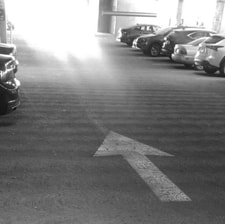 It has been quite a few months since I learned that my primary Yoga teacher and founder of the Integral Yoga organization was not all that I thought, not the Holy man as I imagined him to be but a brilliant spiritual teacher with personal desires he did not resist. I took time to process. Overcoming the doubt and listening to the voices of the women, I went through a period of re-triggered trauma from my past. I felt it all. I anguished over how women deserve better than the current society gives them. We deserve better than being treated like disposable pleasure objects. The upset slowly turned into grieving. The sadness of losing my ideal, my dream vision of a teacher whose teachings have guided me for the past 25 years like a rudder on my journey through life. His teachings so clearly described an influencing force beyond an individual personality guiding us all. I have learned to trust that inner voice even more now. All anyone can really do for us is to point the direction in which to head. To acknowledge this independence and personal responsibility feels like growing up. "I am always ready to help you. My sympathies are ever with you. I will radiate joy, peace and thought currents of love towards you. I will inspire you, but I cannot do the work for you. You yourself will have to do the work. The struggle and exertion must come from your side.” - Swami Sivananda I recently had a powerful dream with Swami Satchidananda. I had my first dream with him when I was only 19, living in a freshly democratic post-communist Czech Republic. He taught me a Sanskrit chant before I knew there was Yoga or the Sanskrit language. In this new dream just a couple weeks ago, he was in a new body of a young man. We spoke a little. I told him I missed his beard and he showed me his whiskers that are starting to grow under his jaw, not thick enough to grow a beard yet. I was lucid enough to remember my current life. I have been coordinating the San Francisco Integral Yoga teachers in writing a statement, finding a collective voice to share our concerns for the Integral Yoga organization and community which we all love. It was a gentle and loving request to the authorities for transparency, acknowledgment and open communication about the future. Remembering all that in my dream, nevertheless I felt fully accepted. Swami Satchidananda told me that he holds space for me among his most beloved. I cried and cried until I woke up. I felt so happy for this youth with this wonderful soul as he was just starting out his life. I wonder, will I meet him again before I die? I could recognize him. It is said that the bond between the teacher and student in Yoga continues on. I feel that to be true. How can my heart/mind love and cherish a person and also be disappointed and appalled by their behavior? Can I really understand? I have had a brush of experience with the luminous awareness and Divine presence. I understand that our "knowing" is just an approximation of the Real. Our mental perception of Truth is like squeezing the whole universe into the eye of a needle. We have to bear this human condition as best we can, mine, yours and our teacher's. I’m learning to rest in my heart and let compassion be my guide. I acknowledge the pain and harm that Swami Satchidananda’s behavior has caused to many of the women he sexually interacted with and the harm done within our community by denying the truth or covering it up. I also acknowledge the Light and healing that he has brought into our lives. Holding both of these points of view at the same time in all honesty also feels like growing up This Magnificent Refuge
This magnificent refuge is inside you. Enter. Shatter the darkness that shrouds the doorway. Be bold. Be humble. Put away the incense and forget the incantations they taught you. Ask no permission from the authorities. Close your eyes and follow your breath to the still place that leads to the invisible path that leads you home. by Theresa of Avila The Remnants Memories of friends, their generosity and obsessions, children’s joy, their eyes filled with wonder, the hurt and disappointment, mine and yours. I see the pain of unreconciled differences hanging over us like dark clouds, doors close quickly and words disappear. I see the pain of unwelcome gifts. Receiving in awkward silence things, care, harm you meant for me to have. Turning towards the Light, I can see the pain of holding on to what no longer is, the good and bad. Like trying to wear old clothes that no longer fit or flatter. How does one live with memories? How does one let this pain pass through? How does one move with changing seasons? Fall turning into the winter while remembering the warmth of the sun, or remembering those simple times before the fire came and devoured it all. The Remnant, I look at it and smile, like seeing an old friend I used to spend a lot of time with. I choose to peel away a little from this familiar pain. The heaviness starts washing away, eventually it dissipates. I feel the fresh air and I hear myself sigh. My body starts moving again. We are all making it through, bringing Light into darkness. The clenching softens, dawn’s cleansing power enters in. The wild call comes as the Soul shines through again so hungry for life, taking us for a dance once again. As we move to this new year and consider our resolutions and invite new into our lives, it is helpful to reconcile the old, that which holds us in the tight grasp of the past. "It is never too late for any of us to look at our minds. We can always sit down and allow the space for anything to arise. Sometimes we have a shocking experience of ourselves. Sometimes we try to hide. Sometimes we have a surprising experience of ourselves. Often we get carried away. Without judging, without buying into likes and dislikes, we can always encourage ourselves to just be here again and again and again." ~ Pema Chödron
Swami Satchidananda has been my guru for over 20 years. I have had my share of personal and "non-ordinary reality" experiences with him. I have felt guided by him. I owe my gratitude to Integral Yoga for holding space for my spiritual development and I strongly believe that is still happening regardless of its founder's, Swami Satchidananda's past. My hope is that the teachings of Integral Yoga thrive and support many people on their path in the years to come.
Many of you have heard the allegations regarding Swami Satchidananda being in sexual relationships or proposing such to women. He denied this when he was still alive. There are women who are coming forward now with their personal stories of having been in sexual relationships with him. I have no reason to deny their message. I acknowledge the truth. Some had a loving and caring experience and some were deeply hurt. There is no doubt there was an enormous imbalance in power in these relationships and encounters even though they were to my knowledge consensual. It is this abuse of power and the cover up of truth that I find most troubling. There has been a lot of anger among people in the community due to the women being silenced or shamed for coming forward with their stories, now and in the past. This information is very difficult for many to process and the reaction to hearing it varies greatly. There is no longer space amongst us for comfortable denial. What does that mean to me personally? I moved from viewing Swami Satchidananda as a saint and a Guru to seeing him as a brilliant teacher with access to the inner world of Light and Love with highly developed psychic powers and at the same time being deeply, humanly flawed. Nevertheless, the teachings he shared with us are timeless, valid and powerful. In my heart I am glad Swami Satchidananda has been part of my path and at the same time I feel betrayed. My experiences of his guidance have been so powerful. Yet, over the course of many years, the guidance has not been coming exclusively from him. The guidance is within and comes in different forms. In my case, contemplating this brought forth old traumas which I had to process in order to be able to move forward. It took me months to detangle my personal traumas from this. In a strange way, I am relieved now of the burden I carried for so long since my late teens. I am grateful to have married a man who has always been kind and respectful in these ways. I see this time as an opportunity for healing. Acknowledgement and acceptance are the first steps. Reconciling the memories and making peace with the past are powerful tools that help us maintain a peaceful and loving existence. Self compassion is so important while seeing and allowing the thoughts, memories and emotions to emerge as well as finding support. As we foster healing in ourselves, we also heal collectively. May we all find kindness and compassion in our heart May our word be kind and truthful My our minds be clear and peaceful May the Light of Truth overcome all darkness Door in the Sky The other day a door in the sky appeared as I lay on the beach watching the clouds taking shapes. There was a rabbit prancing by. The door opened. I soared up like an eagle and entered this mystery, a door to the other side of the sky where the bridges lead to many places and timelines. I stayed for a while visiting, just like a walk through the garden with many flowers to love, I was in awe. "What do people think spiritual development is? It’s not lights and trumpets. It’s very simple. It’s right here and now. People have this idea that Enlightenment and realization is something in the distance - a very fantastic and magnificent happening which will transform everything once and for always. But it’s not like that at all. It’s something which is sometimes so simple you hardly see it. It’s right here in front of us, so close we don’t notice it. And it’s something which can happen at any moment. And the moment we see it, there it is. It’s been there all the time, but we’ve had our inner eye closed. When the moments of awareness all link up - then we become a Buddha. "
~Jetsunma Tenzin Palmo Love and joy Darkness and sorrow Thread by thread Now the blue one now the gray Dreams and images Fantasies and realities Thread by thread Now the gold one and now the black Each thought each feeling Every wish and every complaint Thread by thread The tapestry of life the magic of weaving Is the fabric smooth? What does it look like? Is it dark? Is it light? Now the silver one and now one of Light Words of friends, words of teachers Words of the enemy, words of me. Thread by thread The dream weaving of Real. Watch the thread going in. Choose the fabric of Life Weave it from the sunlight and the moon light and starlight and delight Thread by thread |


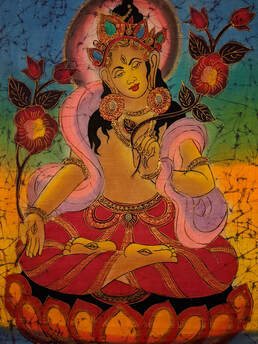
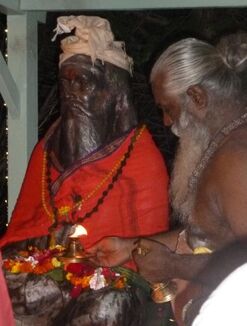


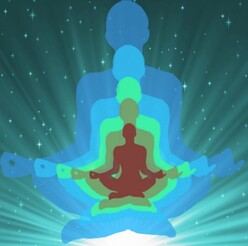


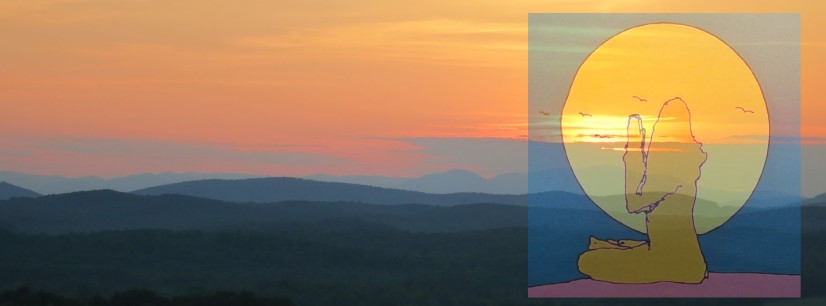
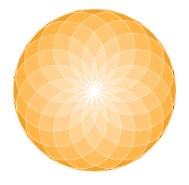

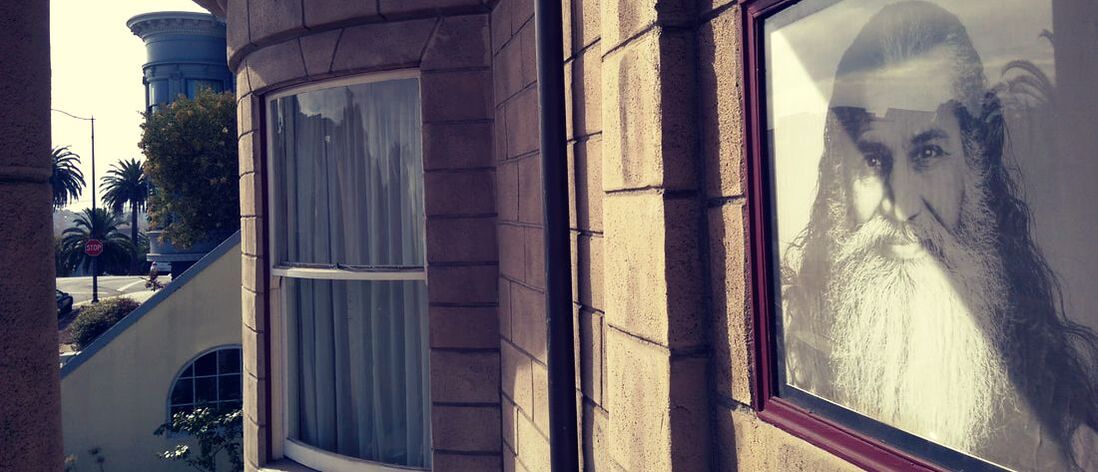
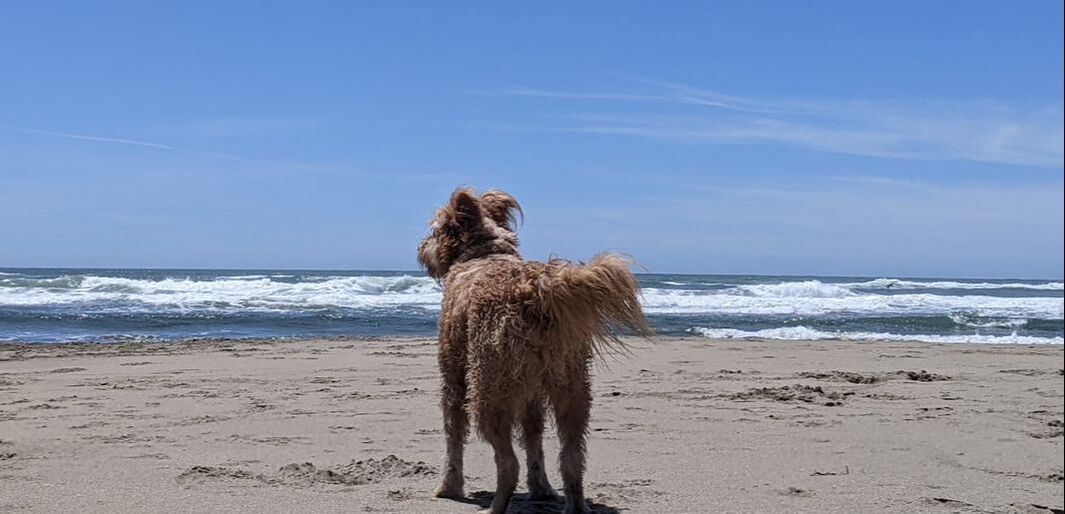

 RSS Feed
RSS Feed
